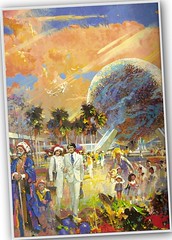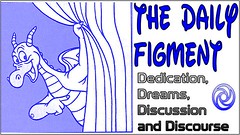Whether you arrive by monorail or automobile, the entrance to Epcot Center is through the future. It is Future World that welcomes the visitor first, with the million-pound, 180-foot-high sphere of Spaceship Earth glinting in the sunlight, the largest structure of its kind in the world. Half a dozen pavilions form a wide ring around it, each dealing with an area of vital concern to all of us in the years ahead: energy, transportation, agriculture, mariculture, communications, technology and imagination, without which advances in the other areas could not be made.
 Every pavilion has its own sponsor and board of independent advisers, although the whole is coordinated by the large team at WED (Walter Elias Disney) Enterprises, the design and engineering unit of Walt Disney Productions, and put together at MAPO (named for Mary Poppins), its manufacturing and production unit. Each pavilion approaches its theme by giving us a look at where we were, where we are now, and what the possibilities for the future are.
Every pavilion has its own sponsor and board of independent advisers, although the whole is coordinated by the large team at WED (Walter Elias Disney) Enterprises, the design and engineering unit of Walt Disney Productions, and put together at MAPO (named for Mary Poppins), its manufacturing and production unit. Each pavilion approaches its theme by giving us a look at where we were, where we are now, and what the possibilities for the future are.
The emphasis is on possibilities, since Walt Disney had an abiding faith in the ability of people to appreciate imagination and ingenuity, to recognize what was good. It was his contention, shared by his successors, that if people got the right information they would inevitably take the right action. The trick, of course, is to get people to sit still for the information. The organization that Walt fostered is a wizard at giving people facts they enjoy and remember.
p. 35 Walt Disney's Epcot Center. 1982
The illustration is from page 33 of the book. It is half of a painting done by Herb Ryman, a Disney Legend, when conceptualizing Epcot Center.
Visit the Herb Ryman Disney Legends page.


No comments:
Post a Comment